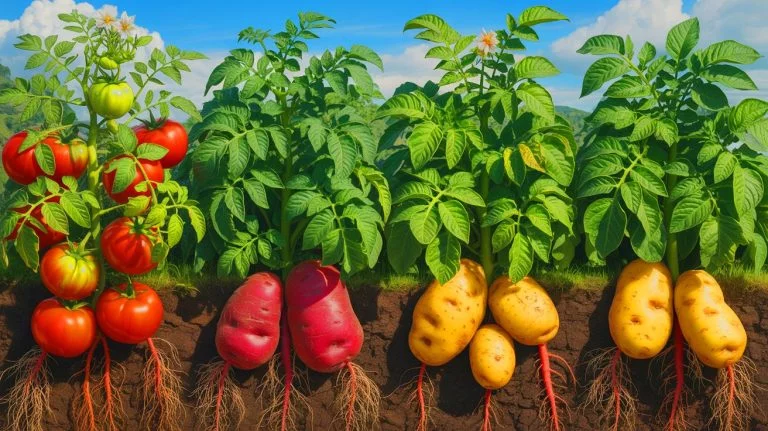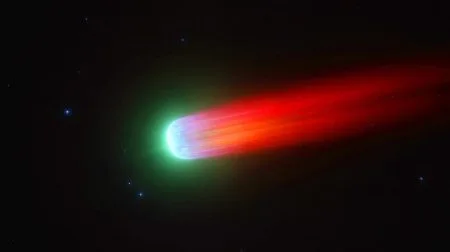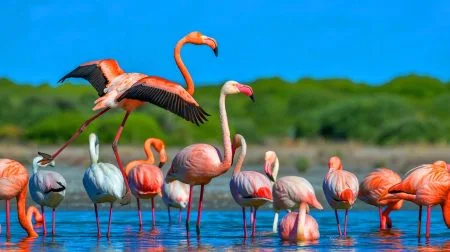| IN A NUTSHELL |
|
The humble potato, a staple in diets worldwide, has long been shrouded in mystery concerning its origins. Despite its ubiquitous presence, the genetic journey of the potato has remained elusive. Recent research by an international team of scientists has finally unearthed its ancient roots, revealing a fascinating tale of natural hybridization. This discovery not only sheds light on the potato’s past but also offers insights into the broader mechanisms of plant evolution and adaptation.
The Ancient Hybridization Event
The modern-day potato owes its existence to an ancient interbreeding event that occurred approximately 9 million years ago. This natural cross-breeding transpired between tomato plants and a potato-like species known as Etuberosum, native to South America. The result was a novel plant capable of producing tubers, a characteristic absent in its Etuberosum ancestors. This event marked the beginning of an evolutionary journey that would eventually lead to the diverse varieties of potatoes we enjoy today.
Sanwen Huang from the Chinese Academy of Agricultural Sciences highlighted the significance of this discovery. “We’ve finally solved the mystery of where potatoes came from,” he remarked, emphasizing the evolutionary implications of such hybridization events. The research involved analyzing an extensive collection of genetic data, including 450 genomes from cultivated potatoes and 56 from wild species. This comprehensive approach provided robust evidence of the potato’s hybrid origins.
Deciphering the Genetic Puzzle
The genetic analysis revealed that every potato species carries a balanced mix of genetic material from both Etuberosum and tomato plants.
Wild potatoes are notoriously difficult to sample, making this dataset the most comprehensive collection of wild potato genomic data ever analyzed,
noted Zhiyang Zhang from the Agricultural Genomics Institute at Shenzhen. This breakthrough resolved the long-standing puzzle of how modern potatoes developed their tuber-forming capability.
Despite being distinct species, Etuberosum and tomatoes shared a common ancestor approximately 14 million years ago. Their ability to interbreed, despite diverging for about 5 million years, underscores the dynamic nature of plant evolution. The study pinpointed specific genes responsible for tuber formation, with the SP6A gene originating from the tomato parent and the IT1 gene from Etuberosum. These genes were crucial in enabling the development of tubers, a key trait for survival and proliferation.
The Role of the Andes Uplift
The emergence of tubers in early potatoes coincided with significant geological events, notably the rapid uplift of the Andes mountains. This period of intense tectonic activity created a myriad of new ecological niches, from grasslands to alpine meadows. The tuber’s development provided potatoes with a substantial evolutionary advantage, allowing them to thrive in these diverse and challenging environments.
The ability to store nutrients underground enabled potatoes to endure harsh weather conditions and quickly adapt to shifting ecological landscapes. As a result, potatoes spread rapidly across Central and South America, diversifying into the myriad forms we see today. This adaptability was further enhanced by the tuber’s capability to facilitate asexual reproduction, allowing potato plants to proliferate without relying on seeds or pollination.
The Impact on Modern Agriculture
The discovery of the potato’s ancient origins and its evolutionary journey offers valuable insights into modern agricultural practices. Understanding the genetic mechanisms that facilitated the potato’s adaptation to diverse environments can inform breeding programs aimed at enhancing crop resilience and yield. As climate change continues to pose challenges to global food security, such knowledge becomes increasingly vital.
Moreover, the study underscores the importance of preserving genetic diversity within crop species. The rich variety of potatoes we enjoy today is a testament to the evolutionary processes that have shaped them over millions of years. Preserving this diversity is crucial for maintaining the adaptability and resilience of crops in the face of environmental changes.
As the curtain lifts on the potato’s enigmatic past, we are left pondering the broader implications of its evolutionary tale. How might the insights gained from this research influence our approaches to agriculture and biodiversity conservation in the future?
Did you like it? 4.6/5 (21)








Wait, are potatoes and tomatoes literally related? This is blowing my mind! 🥔🍅
How does this change our understanding of plant evolution?
Are there any health implications for us consuming these “hybrid” plants?
Wow, 9 million years? That’s older than my grandma’s casserole recipe! 😂
Does this mean we might find other unexpected plant hybrids in the future?
Thank you for sharing such an insightful article. The genetic analysis part was fascinating!
Is the genetic diversity of potatoes at risk with current farming practices?
I’m skeptical. How can they be certain about something that happened 9 million years ago?
So, does this mean tomatoes are technically older than we thought? 🍅
Can we expect more resilient potato crops in the future due to this discovery?